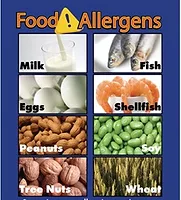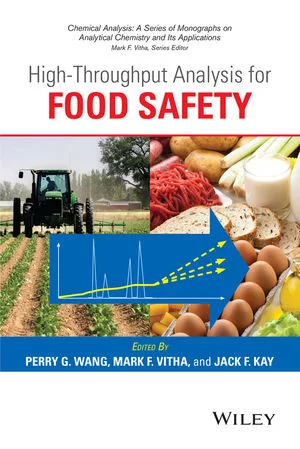Processors Increasingly Turning to Testing for Allergen Control

In our last Food Safety Insights column, we looked at the progress food processors are making in their efforts to comply with the Food Safety Modernization Act (FSMA). While we found that most processors report that they are indeed in compliance or close to where they need to be, one of the issues that they reported that is still a challenge—especially in their supply chain—and causing them to make changes in their program is control of allergens. So, this article will focus on allergen control and what processors are doing.
Recall from our previous article that the data for this study are from the survey that we completed in August 2018, in which we asked 280 processors from around the world what steps they are taking to improve their allergen control programs.
In this sample, roughly 30 percent of the processors in the U.S./Canada reported that efforts to comply with FSMA have significantly changed the way they test or control for allergens. For those suppliers outside the U.S./Canada, 38 percent reported that they had made significant changes.
The data indicate that processors are making preventive efforts to maintain or improve the performance of their programs rather than as a response to major incidents or other remedial efforts. I mention this because 95.5 percent of the respondents reported that they had not had a recall due to allergens. This does not mean that they have had no problems related to allergens, and they certainly may have faced situations that caused them to dispose of product or conduct additional cleaning processes or numerous other responses where their operations may have been impacted at significant cost. From the data and the comments we heard in our interviews, however, their programs appear to have caught major issues, at least before they rose to the level of a recall.
Why Some Processors Don’t Test
When asked what changes processors are making, the most frequent answer, accounting for one-third of the responses, was “more testing” (Figure 1). This was balanced by another one-third who reported that they conducted no testing at all because they rely on data from their suppliers, they have a product with no known allergens, or their product itself is a known allergen (e.g., seafood and nuts being the most commonly mentioned). Outside of testing, the next most common answers for changes that had been made were “improved product segregation” processes and “updated documentation and labeling.” Others mentioned that they had updated their process validations, including changing their definitions of “clean.”.png)
We asked about the types of testing processors are doing. Of those reporting that they were using in-plant, rapid methods, 18.4 percent reported using allergen-specific tests only, 17.3 percent reported using protein-specific tests only, and 13.5 percent reported that they use both types of these rapid tests (Figure 2). When asked about the use of outside commercial labs, 21.6 percent said they exclusively send their allergen samples out for analysis, whereas nearly one-half said they send at least some samples to an outside lab. Close to 40 percent also reported using ATP specifically as part of their allergen control program.
.png)
We also asked what products or services processors wanted to see to improve their allergen control programs. With the number of respondents reporting that testing was a concern and that they expected to increase their volume of testing, it was not surprising that the top response mentioned was related to test methods: 36.9 percent said they would like to see “more specific and faster” allergen test methods. This was the favorite answer by a ratio of more than 5 to 1 over the next answers, which included “better training programs” and “better color-coding and labeling tools” (Figure 3).
.png)
Processor Wish List
In the test category, processors mentioned that they would like to have a test that “tests for all eight major allergens in one test” (especially U.S. processors). Others mentioned a need for “tests for more of the rare allergens, outside the Big 8 or Big 11 [including Canada], like coconut and other tree nuts.” One snack food producer very directly stated, “Plant labs are in need of tree nut-specific tests.” Another processor mentioned that they had to develop their own in-house test for an uncommon allergen because a commercial test was not available.
This is clearly an opportunity for diagnostic companies focusing on this part of the rapid testing market. Referring to the data in this survey, and using additional unpublished data that we have collected, we estimate that the worldwide market for rapid test products for use in allergen programs (allergen and protein tests, excluding ATP tests) exceeds $100 million. By test volume and market value, the market is skewed somewhat toward tests that are allergen specific. Although the numbers of processors who use each type of test (or both) are comparable, processors report using nearly twice as many allergen-specific tests on a weekly basis as protein tests. Because of this, our estimates place the value of the market for allergen-specific tests in the 60–65 percent range of the total market. But there is also a clear demand for better, faster, and more specific tests, creating growth potential in this market and an opportunity for those diagnostic companies that can respond.
In other categories outside of testing, several asked for better dust control and containment measures, especially to control cross-contamination via dust on employees. Rolling this request together with their testing needs, several asked for air control with integrated allergen-detection systems. Other similar requests for electronic-based allergen detection and alert systems were also common.
Other processors mentioned that standardization of other tools, such as standardized color-coding systems (e.g., assigning specific colors to each of the Big 8 allergens), could be used on tools and materials, as well as on plant forms and paperwork, and would be useful, especially when trying to align their supply chains. We also noticed a demand for better training systems and tools. People mentioned that cross-contamination from employees was a common problem, either from lack of adherence to segregation processes or, in what was described as even more frustrating, employees bringing allergens into the plant from the outside, especially in their lunches. This observation aligns well with what we reported in our February/March 2018 column, when nearly 40 percent of processors reported that employee training and compliance was a “program weakness.”
From our conversations with processors, this is an area that will only continue to require more focus. As we saw in our last article, some of this focus will be directed at better control of their supply chains. But we also see that testing will increase, as will internal control of cross-contamination through processes and the need for better employee compliance.
Bob Ferguson is president of Strategic Consulting Inc. and can be reached at insights@food-safety.com or on Twitter at @SCI_Ferguson.
Looking for quick answers on food safety topics?
Try Ask FSM, our new smart AI search tool.
Ask FSM →







.webp?t=1721343192)

